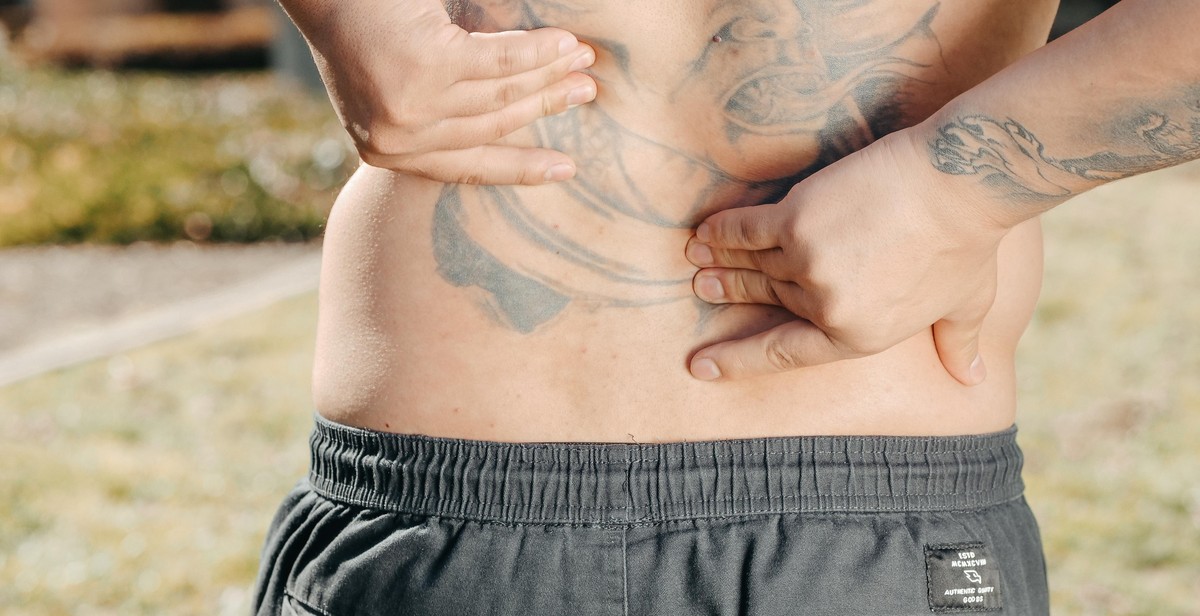How to Overcome Tattoo Pain: Coping Strategies for a More Comfortable Experience
Getting a tattoo can be a thrilling and exciting experience, but it can also be quite painful. Whether you’re a first-timer or a seasoned tattoo enthusiast, the pain can be a real obstacle to overcome. But fear not, there are several coping strategies that can help you manage the pain and discomfort associated with getting a tattoo.
Personal Experience
As a professional article writer and content creator, I have had the opportunity to research and write about various topics, including tattoos. I have also personally experienced the pain and discomfort of getting a tattoo. My first tattoo was a small one on my wrist, and I remember feeling nervous and apprehensive about the pain. However, with the right coping strategies, I was able to manage the pain and complete the tattooing process without any major issues.
The Importance of Coping Strategies
Having coping strategies in place before getting a tattoo is crucial to ensuring a more comfortable experience. Coping strategies can help reduce anxiety, manage pain, and make the overall experience more enjoyable. In this article, we will explore some of the most effective coping strategies for overcoming tattoo pain and discomfort.

Understanding Tattoo Pain
Getting a tattoo can be a painful experience for many people. Understanding the reasons behind why tattoos hurt can help you better prepare and cope with the pain during the process.
Why Tattoos Hurt
The process of getting a tattoo involves the use of a needle that repeatedly punctures the skin to inject ink under the surface. This causes minor trauma to the skin and can result in pain and discomfort. Additionally, the pain can be intensified depending on the location of the tattoo on the body and the size and complexity of the design.
It’s important to note that pain is subjective and can vary from person to person. Some people may find the pain to be tolerable, while others may find it unbearable.
Factors That Affect Tattoo Pain
Several factors can affect the level of pain experienced during a tattoo session. These include:
- Location: Areas of the body with thinner skin, less fat, and more nerve endings tend to be more painful. Examples include the ribs, ankles, and wrists.
- Size and complexity: Larger and more complex designs require more time and more needle punctures, which can result in more pain.
- Personal pain tolerance: Everyone has a different pain threshold, which can be influenced by factors such as age, gender, and overall health.
- Artist’s technique: The skill and technique of the tattoo artist can also play a role in the level of pain experienced. A more experienced artist may be able to work more quickly and efficiently, resulting in less pain for the client.
It’s important to communicate with your tattoo artist about any concerns or fears you may have about the pain. They may be able to offer tips or advice on how to manage the pain during the session.
| Tip: | Consider taking a pain reliever such as ibuprofen before your tattoo session to help reduce discomfort. |
|---|
Overall, understanding the reasons behind tattoo pain and the factors that can affect it can help you better prepare for and cope with the pain during the tattooing process.

Preparation Tips for a More Comfortable Tattoo Session
Getting Enough Rest
One of the most important things you can do to prepare for your tattoo session is to get enough rest. A good night’s sleep will help you feel more relaxed and less anxious during the tattooing process. It will also give your body the energy it needs to heal and recover after the session.
Staying Hydrated
Drinking plenty of water before your appointment can help you stay hydrated and make the tattooing process more comfortable. When your body is well-hydrated, your skin is more pliable, which can make it easier for the tattoo artist to work on.
Eating Before Your Appointment
It’s important to eat a good meal before your appointment to keep your blood sugar levels stable. This will help you avoid feeling lightheaded or faint during the tattooing process. Make sure to eat a balanced meal that includes protein, complex carbohydrates, and healthy fats.
Choosing the Right Clothing
Wearing comfortable clothing to your appointment can make a big difference in how comfortable you feel during the tattooing process. Choose loose-fitting clothing that will allow you to move around easily. Avoid tight clothing that could rub against your new tattoo and irritate it.
Topical Anesthetics and Numbing Creams
If you’re concerned about the pain of getting a tattoo, you may want to consider using a topical anesthetic or numbing cream. These products can help reduce the discomfort of the tattooing process. It’s important to talk to your tattoo artist about any products you plan to use before your appointment.
| Pros | Cons |
|---|---|
| Can help reduce pain and discomfort during the tattooing process | May cause skin irritation or allergic reactions |
| Can make the tattooing process more comfortable for people with low pain tolerance | May not be effective for everyone |

Coping Strategies During Your Tattoo Session
Getting a tattoo can be a painful experience, but there are many techniques you can use to help manage the pain and discomfort. Here are some coping strategies to consider:
Deep Breathing and Meditation
Deep breathing and meditation techniques are great for helping you relax and manage pain during your tattoo session. Take slow, deep breaths and focus on your breathing. You can also try visualization techniques, such as imagining yourself in a peaceful place, to help distract yourself from the pain.
Distraction Techniques
Distraction techniques can be a great way to take your mind off the pain of getting a tattoo. You can listen to music, watch TV, or even chat with your tattoo artist to keep your mind occupied. Some people also find it helpful to bring a friend along for support and distraction.
Positive Self-Talk
Positive self-talk can help you stay calm and focused during your tattoo session. Remind yourself that you can handle the pain and that it will be over soon. You can also try using affirmations, such as “I am strong” or “I can do this,” to help boost your confidence and reduce anxiety.
Physical Techniques
Physical techniques, such as applying pressure or using numbing cream, can also help manage the pain of getting a tattoo. Some people find it helpful to use a stress ball or squeeze toy to help distract from the pain. You can also ask your tattoo artist if they offer any pain management options, such as breaks or numbing cream.
- Take slow, deep breaths and focus on your breathing
- Listen to music, watch TV, or chat with your tattoo artist to distract yourself
- Use positive self-talk and affirmations to boost confidence and reduce anxiety
- Apply pressure or use numbing cream to manage pain
Remember, everyone’s pain tolerance is different, so it’s important to find the coping strategies that work best for you. Don’t be afraid to speak up and ask for breaks or pain management options during your tattoo session.
Aftercare Tips for Minimizing Pain and Discomfort
After getting a tattoo, it is important to follow the aftercare instructions provided by your tattoo artist to minimize pain and discomfort. Here are some tips to help you manage pain and swelling:
1. Keep the Tattoo Clean
Wash your tattoo gently with mild soap and cool water, and pat it dry with a clean towel. Avoid scrubbing or rubbing the area, as this can irritate the skin and cause further pain and discomfort.
2. Apply a Cold Compress
Applying a cold compress to the tattoo can help reduce swelling, inflammation, and pain. Wrap a clean, damp cloth around a bag of ice or frozen vegetables and apply it to the tattoo for 10-15 minutes at a time.
3. Take Pain Medication
If you are experiencing significant pain and discomfort, talk to your doctor about taking over-the-counter pain medication such as acetaminophen or ibuprofen. Follow the recommended dosage and do not exceed the maximum daily limit.
4. Elevate the Tattoo
If your tattoo is located on an area that can be elevated, such as your arm or leg, prop it up with pillows to help reduce swelling and pain.
5. Avoid Tight Clothing
Wear loose, comfortable clothing that will not rub against or irritate the tattoo. Tight clothing can cause additional pain and discomfort.
6. Stay Hydrated
Drink plenty of water to keep your body hydrated and help the healing process. Dehydration can cause the skin to become dry and itchy, which can be uncomfortable.
7. Avoid Sun Exposure
Avoid exposing your tattoo to direct sunlight, as this can cause the skin to become dry and irritated. Cover the tattoo with clothing or a bandage if you must be in the sun.
By following these aftercare tips, you can help minimize pain and discomfort after getting a tattoo. Remember to always consult with your tattoo artist and doctor if you have any concerns or questions.
